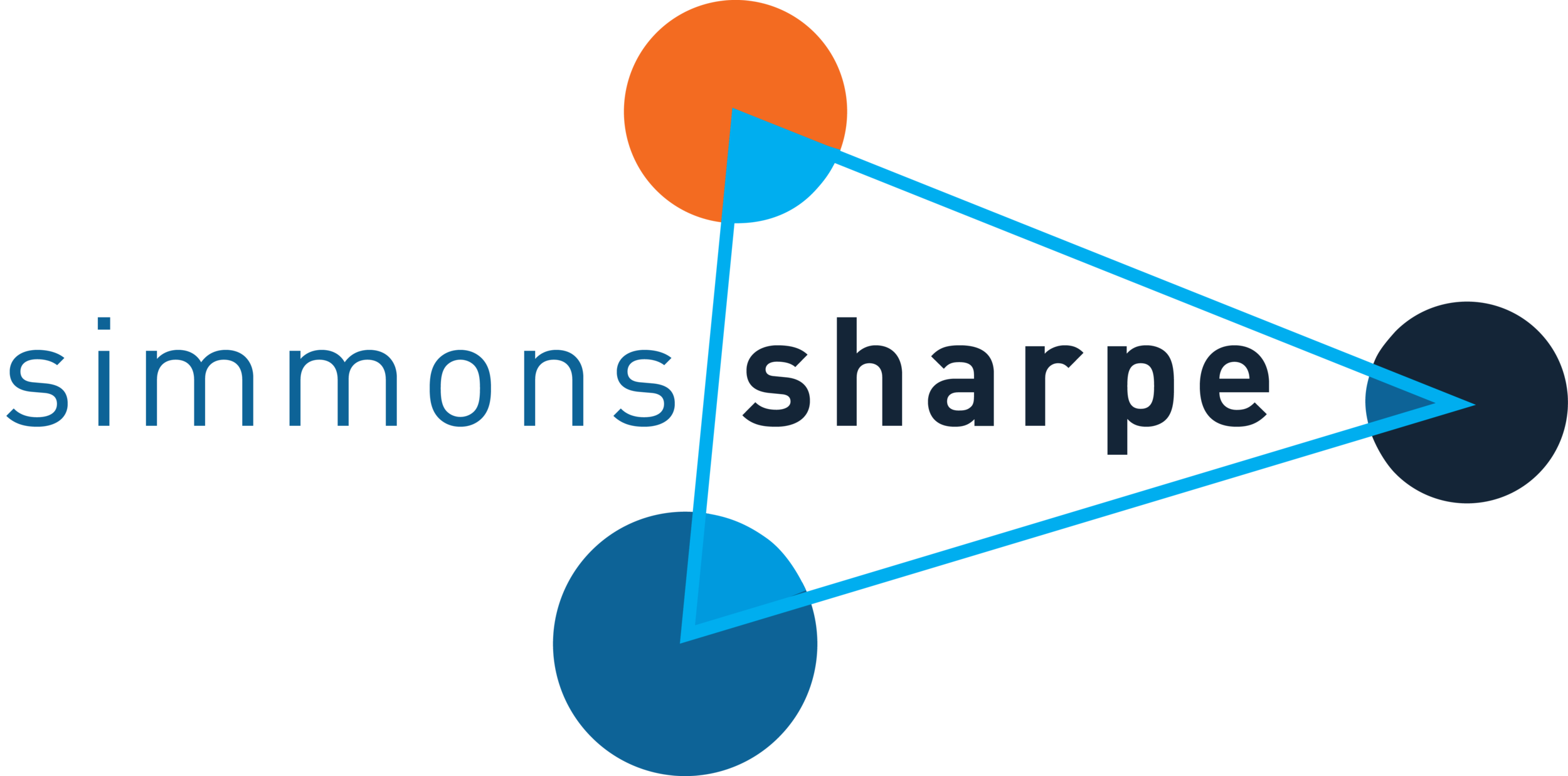10 Digital Transformation Predictions for 2018
Mitchell: "Should we write a blog about our digital transformation predictions for 2018?"
Bill: "What the heck. I figure we'll be right eventually."
Heather: "And if we're wrong, we'll just blame you, Mitchell."
Mitchell: "....errr, thanks? Well here goes nothing..."
1. Augmented Reality Hits the Accelerator: Augmented (“AR”) and virtual reality (“VR”) will grow from a $13.9B market to over $100B by 2021. We predict that AR will take about 80% of that market, because, while not everyone has a pair of virtual reality glasses lying around, we all have smartphones.
IKEA uses augmented reality to let you preview how furniture will look in your space.
Augmented reality overlays a virtual image on the real-world environment and is activated when a camera recognizes a “marker” on an object. The techies call that “image recognition,” and it’s the foundation of AR. Examples include showing someone how to change the filter on a compressor or any other maintenance task, providing helpful information about new or complex products, and pure entertainment like Pokémon GO and Snapchat filters.
While the tech is cool, we believe it's only useful to your business if it shrinks the sales cycle, lowers costs, engages the customer, or increases conversion. Learn more about augmented reality for business in our recent blog.
2. Shopping at the Tip of Your Tongue: It was impossible to watch TV during the 2017 holiday season without being bombarded with commercials for Amazon Echo or Google Home, and is there any wonder why? Walker Sands reported that one in five consumers (19 percent) have made a voice purchase through Amazon Echo or another digital home assistant and another third (33 percent) plan to do so in the next year. Furthermore, RBC Capital Markets recently estimated that Alexa alone could be a $10 billion business by 2020.
We predict voice ordering will be most relevant for health care, beauty, household cleaning, and grocery categories where context can be easily understood by past purchases. If you operate in any of these verticals and aren't pursuing voice assisted commerce, watch out before Amazon and your competitors take a bite out of your market share.
3. Artificial Intelligence Goes from GeekSpeak to Business Capability: Moonshots are out. Process automation (replacing a lost credit card) is in, as are cognitive insight (credit card fraud detection or personalized targeting of digital ads) and cognitive engagement (using a natural language processing chatbot for customer care). We predict in 2018 that many, many businesses other than IBM will begin to experiment consistently with AI.
They will start with process automation (rules engines and expert systems – i.e., "if this then that" logic) and move to cognitive insight with machine learning. Machine learning is a program/system that can, with ever more data, teach itself to learn via an optimization algorithm. Kind of like, ahem…a regression analysis, not to get all old school on you. They will then move from there to deep learning, which is like machine learning only more precise and able to deal with unstructured data, like voice and images. Watch as Amanda Parker, Director of Business Development for chatbot-maker Zoom.Ai, explains AI from process automation (ordering a pizza) to deep learning. She spoke at DataMarketing Toronto 2017.
While AI is certainly intriguing, we caution you to remember it's the combination of AI, automation, and human touch that creates the best customer experiences. Machines have to know when to hand off to humans, and vice versa. Learn more about artificial intelligence trends in business in our recent blog.
4. Customer Care Becomes the New Marketing: Customer care has a 100% customer engagement rate. Marketers twist themselves into pretzels to get a 5% engagement rate. Solve the customer’s problem(s), fast and consistently, and you’ve got an engaged friend for life.
Customer care response rate and speed can drive a 15+ percentage point increase in positive brand sentiment, and customers will spend up to 20% more with a brand that responds to a customer service Tweet (Applied Marketing Science, 2016). Best in class companies target a less than 20-minute response time on social media for customer care. The average response time is closer to 8 hours.
What does it all mean? There has never been a better time to digitally transform your organization to use social media cross functionally, not simply as a marketing vehicle. We predict more and more organizations will begin to integrate their marketing, customer care, and communications teams on social with amazing results, and advanced listening and workflow tools such as Sprout Social or Spredfast will make that job even easier.
5. “Smart” is Table Stakes – As Is the Market Repositioning That Goes With It: Smart consumer gadgets are getting all the buzz, but the business side of the Internet of Things is actually the lion's share of it, comprising about 65% of the overall IoT market by 2020.
“Bain predicts B2B #IoT will generate more than $300B annually by 2020, including about $85B in the industrial sector.”
Discrete manufacturing, transportation and logistics, and utilities will each comprise a $40B market by 2020. No matter how established your business is, it is time to figure out how your products can get smart to improve the experience for your customers. And then make sure the world knows you've made the transition - your key messages, website, and enabling technologies will likely all need to change. See how one of our clients effectively made this leap in 2017.
6. Weed Makers Straighten Up and Fly Right: In 2018, recreational cannabis will quickly becoming legalized on a dramatic scale. But it’s hardly the end of Prohibition. California cannabis sellers start off with 276 pages of regulations to follow, and can only communicate in environments where at least 71.6 % of the audience is over 21. So this is hardly a marketing explosion. Instead, it’s an educational exercise for most potential new customers, and that means that customer care and user experience will come to the fore.
Focused social media that follows health guidelines has already proved to be successful in Canada for medical cannabis and that trend can expect to be continued. Smart operators should create a social media strategy that covers off things like brand, voice and tone recommendations as well as purpose, character and language. Add in opt-in email, experiential events that are strictly controlled for age restrictions, and in-store augmented reality and you have your starter kit for successfully selling cannabis within your state or provincial guidelines.
7. Connected Cars Will Win the Race: In the Christmas rush, many people may have missed the Softbank investment in Uber – valued at over 7 billion for 15% of the company. Is this a one off deal? Nope. Not when you consider that Softbank has already made significant investments in other ride-hailing companies including Didi in China, Grab in Southeast Asia and 99 in Brazil. Then add in Softbank’s purchase of the U.S. telecom provider Sprint. And for added zest, include Softbank’s largest acquisition to date – ARM, the mobile chip manufacturer, for $32 billion. ARM currently owns a 95% share of the chips used in smartphones globally. So what’s the real goal here?
Softbank is playing a long game in the connected car world. They have identified that security is the number one issue when it comes to autonomous cars. So in combination with their ride-hailing investments, Sprint, and ARM they will set out to create the most secure connected car network in the world. In an IoT world, autonomous cars will become commoditized as devices or even large appliances. But the guy with the most secure network for connected cars will win.
What’s next for Softbank? We think ownership of the most encrypted, secure automotive software that can be found. The race is on! Currently, Google/Android Auto, Automotive Grade Linux, and Blackberry’s QNX dominate software and infotainment systems in cars. But with Softbank’s recent developments, it now looks like they’re going to have a new best friend, or at the very least – a new powerful global competitor.
8. eSports Become the Games to Watch: Space Invaders has come out of your mother’s basement. Over 100 million people each month log in to Twitch to watch an estimated 23 billion minutes of eSports players battling away at League of Legends and other games. By the end of 2017, the online global eSports audience will reach 385 million people and hit revenues of about $700 million. Think the industry will remain a niche? Think again.
Consider that in 2014, Twitch was acquired by Amazon. The implications of the rise of eSports and other online games (a $50B total market) are profound. Players are going to find a way to play, watch, and wager on these games, and that raises a lot of important questions. Who should offer them? How should they be regulated and made “safe”?
The answer is not to bar the games, or wagering on them, from the country in the interest of safety. Here's one example of what can happen when you do that: we estimate that Canadian provincial lotteries lose about 15% of their revenues, annually, to offshore online gambling sites that offer games the lotteries cannot. Note to all governments everywhere: "protecting" your citizens from their passions or vices simply means the revenues leave the country and players play on unregulated sites that may not offer protections for vulnerable players. Why not let the lotteries offer competitive games and let the profits stay in the country?
Source: Juniper Research, Simmons Sharpe analysis
9. Someone Does Something Really Useful for Consumers with Blockchain: And then suddenly, we’ll all understand it a lot better. Two years ago, Heather wrote an article on LinkedIn describing how the blockchain works in the simplest of terms. Since then, there’s been more attention paid to bitcoin, which rose over 1,700% between January and November 2017.
While bitcoin has the buzz, it’s the underlying technology – the blockchain distributed ledger system, that has the potential to revolutionize banking, insurance, and connected cars. More than anything, blockchain builds trust, since it creates a "verifiable cryptographic receipt of any transaction." While large companies such as Walmart are using the blockchain to improve supply chain traceability, utilities are investigating it for energy grid trading and management, and insurance companies are using it to simplify complex international coverage, we predict the blockchain will move from opaque to transparent as consumers see the value in it for them.
“You don’t need honor among thieves—you just need a blockchain.”
10. Cloud Computing is Edged Out: We’ve all heard of the cloud, but what about the edge? Unlike Cloud computing where a server itself is still handling all of the computing work on a single machine, Edge computing allows data produced by internet of things (IoT) devices to be processed closer to where it is created and spread out over multiple computers.
Fans of HBO's "Silicon Valley" will be familiar with edge computing: the fictional Pied Piper platform uses Edge computing concepts.
As devices become more powerful, cloud computing will simply be too slow since these devices will require larger streams of data to operate. Because data does not have to traverse over a network to a data center or cloud for processing, Edge computing is ideal for situations where latencies of milliseconds can be untenable. So if you're in the business of financial services, manufacturing, or self driving automobiles - take note! Edge computing is no longer on the edge.
So there you have it! Our top 10 digital transformation predictions for 2018. You'll notice there's a lot of tech in our predictions. As Michael Dell says, "Technology enables human potential."
Yes, we are big fans of technology and are constantly playing with it to find an edge for our clients. But it's not about the tech. It's about what we do with it to improve our business, personal, and community bottom lines. Ultimately, we're better together! Until next time...








